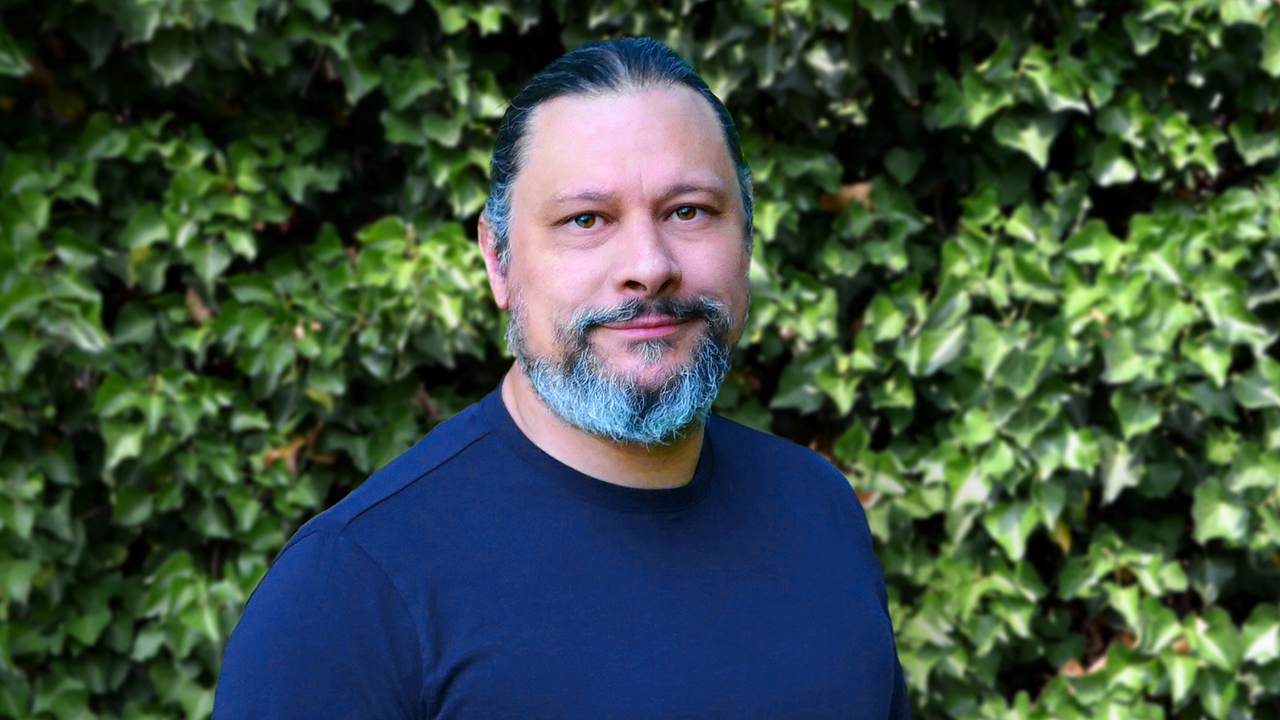
Adobe Research Senior UX Designer Celso Gomes has a deep interest in visual, interaction, and motion design — and a commitment to building tools with creatives’ needs in mind.
Gomes talked to us about discovering his passion for tech and creativity at the keyboard of a pre-internet 8-bit computer, bringing a designer’s sensibilities to research, and the new creative technologies he’s most excited about.
Your background is both creative and technical. Can you tell us about those interests, and how they brought you to Adobe Research?
Like many geeks from my generation, I started with an old 8-bit personal computer and then moved to a more “powerful” Apple IIe, still using 8-bit processors. Back then, I was living in Brazil without much access to knowledge from people or books. Even the hardware was a clone of Z80 and Apple computers of the time, so they worked a little differently. Since I had limited resources, I had to experiment and try things myself. From the beginning, I was always interested in visual output, so my programming was focused on graphics and interaction, and games were my ultimate challenge. When I joined the workforce, I started designing and coding before the age of the internet. I was creating CD-ROMs to run on computers — we didn’t even have the term “user experience” back then! I was working for creative agencies, and then in marketing inside corporations. Around that time, I realized that I really liked working on products, so I found my way to product development, R&D, and many years later, to Adobe Research.

What do you love most about working in research?
I think it’s the love of discovering things. Since I grew up without the internet or many books about technology, I just got the hardware and I had to figure it out. And I think that’s what research is, too. It’s the path never traveled. Nobody knows how to do it yet, which is really exciting to me.
How would you describe your role as a designer on the Adobe Research team?
We have so much amazing research coming from our scientists, and so those of us who are designers with a technical understanding have a unique opportunity — we get to be advocates for our creative users. We get to think about the user experience for new creative tools, processes, and workflows and then help shape new breakthroughs in user interactions. Beyond our direct contributions to product research, we created a series of presentations to help bring design and user research insights to our internal technical audience at Adobe Research. We do demos of design tools and even bring in guests from the design world to talk about their work, and we share things we’ve learned from user studies. It’s one way we’re helping raise the design acumen of our researchers so they can think about users as they’re doing their research.
What are some of the most interesting trends in creative tools and research right now?
I’m always thinking about designers’ roles as storytellers, so I’m really interested in the new tools and workflows we’re seeing. We’re helping users with segmentation, composition, editing, and content consumption of audio and video — all with the goal of improving processes so designers have even better tools for telling their stories.
You’ve worked on several creative tools that are powered by AI. What do you hope AI will help creative people do?
In our research, we see AI as a tool which, by itself, doesn’t create anything meaningful. But when creative people start using AI tools, that’s when the magical moments happen. That’s when the AI tools shine. What I’m really interested in is understanding how AI can help humans be more creative while facilitating some of the processes that take too much time or have repetitive steps. It’s about giving people more time to be creative.
Can you tell us about a couple of the products you’ve helped create?
When I joined Adobe Research about five years ago, I helped work on the technology behind Adobe Podcast, a prototype that uses AI to improve the quality of recordings and allows people to edit audio using a transcript — it’s now available publicly. For this project, we tested new research, defined personas, ran user research sessions, and defined a new UX. The product has proved to be helpful for content creators working with audio. Right now, I’m working with a large team on Project Stardust, a tool that reinvents the way we edit images. The main idea is to let users edit their photos through objects, not pixels. Users can choose objects like people, dogs, or the sky. Then the tool recognizes those objects and lets users just click and move them or apply image processing.

If someone told you they were considering joining Adobe Research, what would you say?
First I’d say, “Yes, do it!” If you like to see your research applied to products, this is a great place to be. And if you’re a designer with technical proficiency, you get the really interesting role of helping to bridge research and prototype ideas – you wear many hats.
And I’d say that if you bring flexibility and curiosity to your role, you’ll thrive here.
Wondering what else is happening inside Adobe Research? Check out our latest news here.